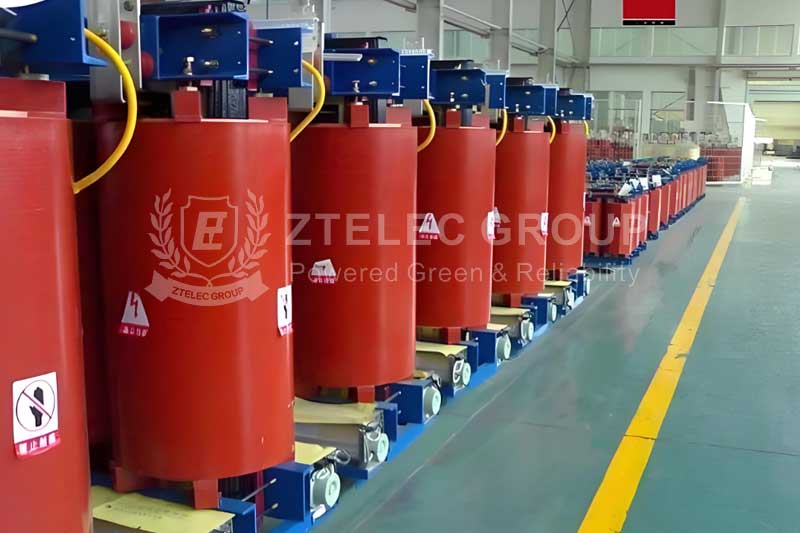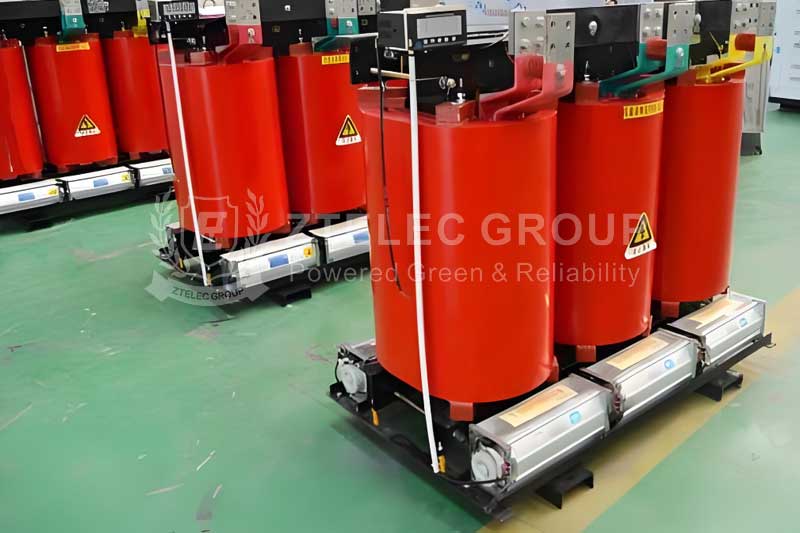Why would you use a dry type transformer?
Dry-type transformers play a central role in the design and implementation of modern power systems. Especially in industrial and commercial sectors, dry-type transformers are increasingly favored for electrical applications due to their unique advantages. This article will explore the reasons for choosing dry-type transformers, including safety, efficiency, environmental friendliness, and ease of maintenance.

1. Safety
Dry-type transformers exhibit excellent safety during operation. Unlike oil-filled transformers, dry-type transformers do not use liquid insulating materials, eliminating the risks of oil leaks that can lead to fires and environmental pollution. This is particularly important in urban buildings and densely populated areas. Dry-type transformers use solid materials such as epoxy resin for insulation, effectively preventing short circuits and electrical shock incidents, ensuring the safety of equipment operators and nearby residents.
2. Efficiency
Dry-type transformers show outstanding performance in energy conversion processes. They have lower energy losses, which can effectively reduce energy waste during power transmission. Moreover, dry-type transformers possess strong load capacities, making them suitable for high-demand power applications and ensuring a stable power supply. In today’s rapidly developing society, businesses have increasing demands for energy efficiency, making dry-type transformers an ideal choice due to their superior performance.
3. Environmental Friendliness
Environmental protection has become a significant global issue. In the selection of electrical equipment, dry-type transformers possess remarkable eco-friendly characteristics. Since they do not use oil or other liquid materials, dry-type transformers do not cause environmental pollution during operation. Additionally, the manufacturing and recycling processes of dry-type transformers are relatively simple and do not negatively impact ecosystems. As society places more importance on sustainable development, choosing dry-type transformers aligns with environmental protection principles and reflects corporate social responsibility.

4. Ease of Maintenance
The maintenance and management of dry-type transformers are relatively straightforward, which is one reason for their popularity. As they do not contain oil or other liquid materials, dry-type transformers do not require regular checks of oil levels or replacement of insulating oils, thus reducing the complexity and cost of maintenance. Furthermore, dry-type transformers have a long service life, typically ranging from 30 to 40 years, alleviating the pressure on companies to replace and maintain equipment.
5. Wide Applicability
Dry-type transformers can be widely used in various power demand scenarios, such as commercial buildings, factories, data centers, hospitals, and schools. With their flexibility and high performance, dry-type transformers meet varying needs for voltage and load in different settings. At the same time, dry-type transformers are relatively compact, making them suitable for space-constrained environments, and providing a distinct advantage in the power layout of modern buildings.
With their outstanding safety, efficiency, environmental features, and ease of maintenance, dry-type transformers have become indispensable equipment in modern power systems. In municipal construction, industrial development, and daily life, the application of dry-type transformers not only enhances the quality and safety of power supply but also contributes positively to promoting sustainable development goals. Therefore, the choice of dry-type transformers reflects not only a reasonable technical decision but also a deep consideration and positive response to social responsibility and environmental protection. In the future power systems, dry-type transformers will undoubtedly play an increasingly important role.
- more+releated article
- 2025-12-13How to Select and Use Phenolic Cloth-base Lami
- 2025-12-13How Much Does Bakelite Sheet Cost? 2025 Price
- 2025-12-13Why are most 3240 epoxy boards yellow?
- 2025-12-13What are the Main Applications of FR4 Epoxy Bo
- 2025-12-13Why Does the Price of Insulating Paperboard Va
- 2025-12-13Heat-Resistant DDP Insulation Paper
- 2025-12-13Comparison of Heat-Resistant DDP Insulating Pa
- 2025-12-13G10 and FR4 Epoxy Boards: Commonly Used for Ge
- 2025-12-13The Price of Heat-Resistant DDP Insulation Pap
- 2025-12-13How to Choose Epoxy Laminate Materials for Gen





